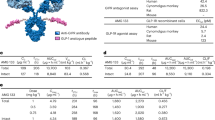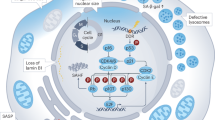Abstract
Background:
Growing evidence supports the idea that de novo steroidogenesis has an important role in prostate cancer’s progression to the castration-resistant state following androgen deprivation therapy. Therefore, reducing the availability of cholesterol for use as a precursor in androgen synthesis may reduce proliferation and disease progression.
Methods:
LNCaP xenograft-bearing mice were castrated and administered simvastatin via diet, and tumor volume and PSA concentration were monitored for 8 weeks post castration. Levels of serum and intratumoral androgens along with serum simvastatin and common toxicity markers were measured at end point.
Results:
Reduced post-castration tumor growth rate in simvastatin-treated mice correlated with delayed time to castration-resistant progression, determined by two serum PSA doublings from post-castration nadir, when compared with xenografts in mice on control diet. At 8 weeks post castration, serum simvastatin levels were comparable to clinically relevant human doses with no evidence of overt muscle or liver toxicity. This suppressed post-castration tumor growth in the simvastatin diet group was correlated with reduced intratumoral testosterone and dihydrotestosterone levels.
Conclusions:
Reduced tumor growth and intratumoral androgen levels observed in simvastatin-treated, castrated mice harboring LNCaP xenograft suggests that suppressing de novo steroidogenesis can delay castration-resistant progression of this tumor model.
This is a preview of subscription content, access via your institution
Access options
Subscribe to this journal
Receive 4 print issues and online access
$259.00 per year
only $64.75 per issue
Buy this article
- Purchase on Springer Link
- Instant access to full article PDF
Prices may be subject to local taxes which are calculated during checkout




Similar content being viewed by others
References
Wallace TJ, Torre T, Grob M, Yu J, Avital I, Brücher BL et al. Current approaches, challenges and future directions for monitoring treatment response in prostate cancer. J Cancer 2014; 5: 3–24.
Huggins C, Hodges CV . Studies on prostatic cancer: I. The effect of castration, of estrogen and of androgen injection on serum phosphatases in metastatic carcinoma of the prostate. J Urol 2002; 168: 9–12.
Wong YN, Ferraldeschi R, Attard G, de Bono J . Evolution of androgen receptor targeted therapy for advanced prostate cancer. Nat Rev Clin Oncol 2014; 11: 365–376.
Thompson TC, Li L . New targets for resistant prostate cancer. Oncotarget 2014; 5: 19–20.
Montgomery RB, Mostaghel EA, Vessella R, Hess DL, Kalhorn TF, Higano CS et al. Maintenance of intratumoral androgens in metastatic prostate cancer: a mechanism for castration-resistant tumor growth. Cancer Res 2008; 68: 4447–4454.
Locke JA, Guns ES, Lubik AA, Adomat HH, Hendy SC, Wood CA et al. Androgen levels increase by intratumoral de novo steroidogenesis during progression of castration-resistant prostate cancer. Cancer Res 2008; 68: 6407–6415.
Hanukoglu I . Steroidogenic enzymes: structure, function, and role in regulation of steroid hormone biosynthesis. J Steroid Biochem Mol Biol 1992; 43: 779–804.
Yue S, Li J, Lee S-Y, Lee HJ, Shao T, Song B et al. Cholesteryl ester accumulation induced by PTEN loss and PI3K/AKT activation underlies human prostate cancer aggressiveness. Cell Metab 2014; 19: 393–406.
Thysell E, Surowiec I, Hörnberg E, Crnalic S, Widmark A, Johansson AI et al. Metabolomic characterization of human prostate cancer bone metastases reveals increased levels of cholesterol. PLoS One 2010; 5: e14175.
Hager MH, Solomon KR, Freeman MR . The role of cholesterol in prostate cancer. Curr Opin Clin Nutr Metab Care 2006; 9: 379–385.
Demierre M-F, Higgins PDR, Gruber SB, Hawk E, Lippman SM . Statins and cancer prevention. Nat Rev Cancer 2005; 5: 930–942.
Papadopoulos G, Delakas D, Nakopoulou L, Kassimatis T . Statins and prostate cancer: molecular and clinical aspects. Eur J Cancer 2011; 47: 819–830.
Farwell WR, D’Avolio LW, Scranton RE, Lawler EV, Gaziano JM . Statins and prostate cancer diagnosis and grade in a veterans population. J Natl Cancer Inst 2011; 103: 885–892.
Marcella SW, David A, Ohman-Strickland PA, Carson J, Rhoads GG . Statin use and fatal prostate cancer: a matched case-control study. Cancer 2012; 118: 4046–4052.
Bonovas S, Filioussi K, Sitaras NM . Statin use and the risk of prostate cancer: a metaanalysis of 6 randomized clinical trials and 13 observational studies. Int J cancer 2008; 123: 899–904.
Bansal D, Undela K, D’Cruz S, Schifano F . Statin use and risk of prostate cancer: a meta-analysis of observational studies. PLoS One 2012; 7: e46691.
Kim JH, Cox ME, Wasan KM . Effect of simvastatin on castration-resistant prostate cancer cells. Lipids Health Dis 2014; 13: 56.
Zheng X, Cui X-X, Gao Z, Zhao Y, Lin Y, Shih WJ et al. Atorvastatin and celecoxib in combination inhibits the progression of androgen-dependent LNCaP xenograft prostate tumors to androgen independence. Cancer Prev Res 2010; 3: 114–124.
Leon CG, Locke JA, Adomat HH, Etinger SL, Twiddy AL, Neumann RD et al. Alterations in cholesterol regulation contribute to the production of intratumoral androgens during progression to castration-resistant prostate cancer in a mouse xenograft model. Prostate 2010; 70: 390–400.
Ettinger SL, Sobel R, Whitmore TG, Akbari M, Bradley DR, Gleave ME et al. Dysregulation of sterol response element-binding proteins and downstream effectors in prostate cancer during progression to androgen independence. Cancer Res 2004; 64: 2212–2221.
Gleave ME, Hsieh J, Wu H, Von Eschenbach AC, Chung LW . Serum prostate specific antigen levels in mice bearing human prostate LNCaP tumors are determined by tumor volume and endocrine and growth factors. Cancer Res 1992; 52: 1598–1605.
Ibuki N, Ghaffari M, Pandey M, Iu I, Fazli L, Kashiwagi M et al. TAK-441, a novel investigational smoothened antagonist, delays castration-resistant progression in prostate cancer by disrupting paracrine hedgehog signaling. Int J Cancer 2013; 133: 1955–1966.
Toren PJ, Kim S, Pham S, Mangalji A, Adomat H, Tomlinson Guns ES et al. Anticancer activity of a novel selective CYP17A1 inhibitor in preclinical models of castrate-resistant prostate cancer. Mol Cancer Ther 2015; 14: 59–69.
Alakhali K, Hassan Y, Mohamed N, Mordi M . Pharmacokinetic of simvastatin study in Malaysian. IOSR J Pharm 2013; 3: 46–51.
Paller CJ, Antonarakis ES . Management of biochemically recurrent prostate cancer after local therapy: evolving standards of care and new directions. Clin Adv Hematol Oncol 2013; 11: 14–23.
Geybels MS, Wright JL, Holt SK, Kolb S, Feng Z, Stanford JL . Statin use in relation to prostate cancer outcomes in a population-based patient cohort study. Prostate 2013; 73: 1214–1222.
Hamilton RJ, Li J, Naini V, Kheoh TS, De Porre P, Molina A et al. Effect of concomitant medication use on outcomes of treatment and placebo arms of the COU-AA-301 and COU-AA-302 studies of abiraterone acetate (AA) in metastatic castration-resistant prostate cancer (mCRPC). J Clin Oncol 2014; 32: suppl; abstr e16045.
Maxfield FR, Wustner D . Intracellular cholesterol transport. J Clin Invest 2002; 110: 7.
Mostaghel EA, Solomon KR, Pelton K, Freeman MR, Montgomery RB . Impact of circulating cholesterol levels on growth and intratumoral androgen concentration of prostate tumors. PLoS ONE 2012; 7: 1.
Solomon KR, Freeman MR . Do the cholesterol-lowering properties of statins affect cancer risk? Trends Endocrinol Metab 2008; 19: 113–121.
Harshman LC, Wang X, Nakabayashi M, Xie W, Valenca L, Werner L et al. Statin use at the time of initiation of androgen deprivation therapy and time to progression in patients with hormone-sensitive prostate cancer. JAMA Oncol 2015; 1: 495–504.
Bair SR, Mellon SH . Deletion of the mouse P450c17 gene causes early embryonic lethality. Mol Cell Biol 2004; 24: 12.
Fokidis HB, Chin MY, Ho VW, Adomat HH, Soma KK, Fazli L et al. A low carbohydrate, high protein diest suppresses intratumoral androgen synthesis and slows castration-resistant prostate tumor growth in mice. J Steroid Biochem 2015; 150: 35–45.
Grigoryev DN, Long BJ, Njar VC, Brodie AH . Pregnenolone stimulates LNCaP prostate cancer cell growth via the mutated androgen receptor. J Steroid Biochem Mol Biol 2000; 75: 1–10.
Attard G, Reid AH, Auchus RJ, Hughes BA, Cassidy AM, Thompson E et al. Clinical and biochemical consequences of CYP17A1 inhibition with abiraterone given with and without exogenous glucocorticoids in castrate men with advanced prostate cancer. J Clin Endocrinol Metab 2012; 97: 507–516.
Acknowledgements
Special thanks to Howard Tearle and Mary Bowden for providing animal care and surgical expertise, and Mitali Pandey for data analysis support. This work is dedicated to the memory of Dr Nicholas Bruchovsky. Funding support provided by the Prostate Cancer Foundation British Columbia to JAG and Prostate Cancer Canada to KMW and MEC (Prostate Cancer Canada Movember Pilot Grant Program #2012-917).
Author information
Authors and Affiliations
Corresponding authors
Ethics declarations
Competing interests
The authors declare no conflict of interest.
Additional information
Supplementary Information accompanies the paper on the Prostate Cancer and Prostatic Diseases website
Supplementary information
Rights and permissions
About this article
Cite this article
Gordon, J., Midha, A., Szeitz, A. et al. Oral simvastatin administration delays castration-resistant progression and reduces intratumoral steroidogenesis of LNCaP prostate cancer xenografts. Prostate Cancer Prostatic Dis 19, 21–27 (2016). https://doi.org/10.1038/pcan.2015.37
Received:
Revised:
Accepted:
Published:
Issue Date:
DOI: https://doi.org/10.1038/pcan.2015.37
This article is cited by
-
Statins and prostate cancer—hype or hope? The biological perspective
Prostate Cancer and Prostatic Diseases (2022)
-
In search of the optimal setting for statin trials in prostate cancer: the power of population-based studies
Prostate Cancer and Prostatic Diseases (2021)
-
Therapy-induced lipid uptake and remodeling underpin ferroptosis hypersensitivity in prostate cancer
Cancer & Metabolism (2020)



